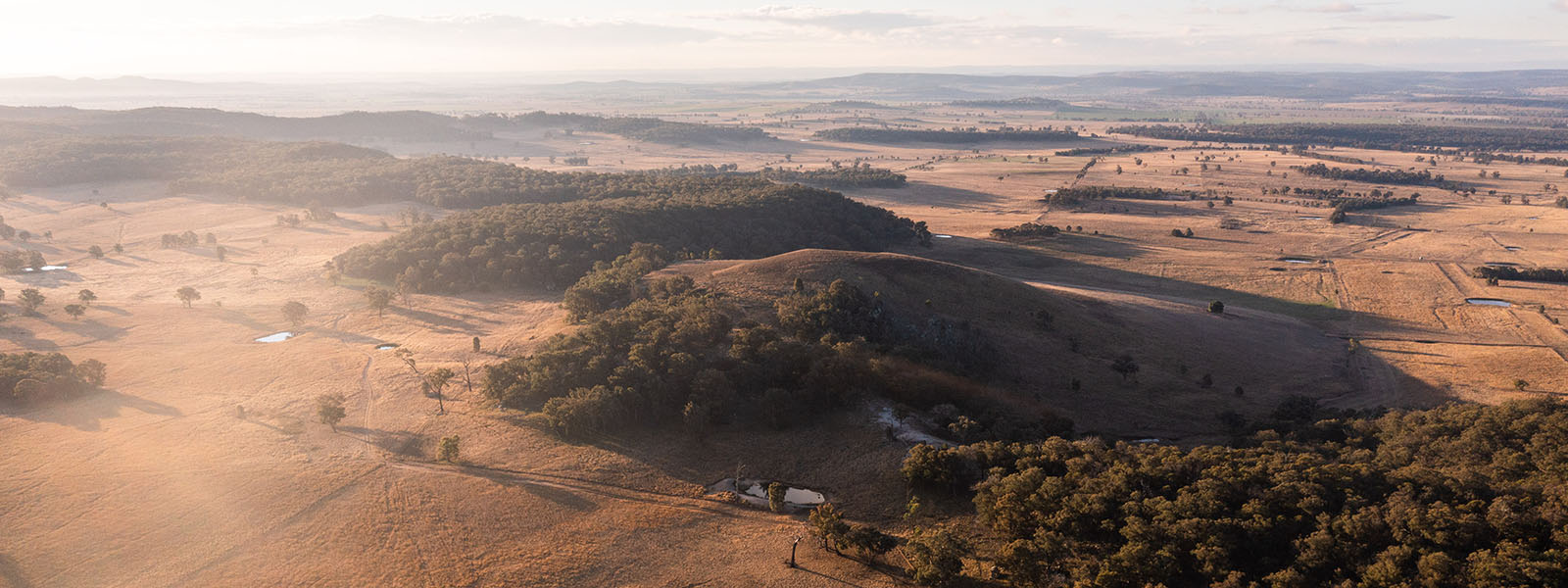Our latest on-farm study has developed a new method of measuring environmental health over time to enable Australian woolgrowers to track the health of their environment.
Many Australian woolgrowers work to leave the land in a better condition than they inherited it and now, monitoring and measuring the health of the environment of their whole farm is possible.
A new ecological assessment process, called Natural Capital Accounting (NCA), enables woolgrowers to track the health of their environment and identify and monitor the relationship between farming practice, environmental impact and farm business performance.

The results from the pilot study were significant.
30,000ha healthy grassy woodlands
30,000ha healthy grassy woodlands
Woolgrowers participating in the pilot study were shown to be conserving and regenerating more than 30,000ha of healthy grassy woodlands and native pastures, protecting their soil and keeping water ways healthy.
1539 tCO2e average carbon sequestration
1539 tCO2e average carbon sequestration
On average, the wool-growing farms involved in the pilot were sequestering more CO2 than they were emitting by capturing and storing a net 1539 tCO2e per year.
80% groundcover over 13 years
80% groundcover over 13 years
On average, the woolgrowers had maintained at least 80% groundcover at all times over the 13 year study period.
Ecosystem services
12 criteria, including regulating services like water purification and pollination, habitat services such as biodiversity protection and provisioning services such as food, fibre and forage production.
Ecosystem type and use
In line with guidance from the System of Environmental-Economic Accounting (SEEA), the study identified the type and use of the ecosystem, to identify the ecological state of the environment.
Environment Profit & Loss
The study calculated each farm’s environmental impact using the 31 metrics of Kering’s EP&L methodology to compare each farm’s individual impact with conventional wool production estimates.
Carbon sequestration estimates
Total farm carbon emissions were calculated and estimates of carbon storage created to calculate each farms carbon sequestration per annum.
Long-term groundcover
Using a commercially available GIS information system the ground cover of each farm was assessed over a 13 year period. To calculate average groundcover.
Ecosystem capacity
The capacity of the farm ecosystem to provide reliable quality forage for livestock was assessed to better understand the value of natural capital.
Spotlight case studies
The first pilot study included 11 wool-growing farms in eastern Australia selected as they covered a diverse range of climates, production systems and landscapes.
Lana
Lana
Tim and Suzanne Wright own ‘Lana’, a 3,470 hectare property on the Northern Tablelands of NSW, where they run Merino sheep and breeding cows. Tim was an early adopted of Holistic Planned Grazing and along with increasing flock size and production, has seen remarkable increases in biodiversity, groundcover and resilience.
Glenwood
Glenwood
Glenwood is a 2,972 hectare property located in the Central West of NSW. The property, which ranges from undulating to hilly healthy grassy woodlands and native pastures, is ideal for breeding Merino sheep, which is exactly what owners Norm and Pip Smith do.
Taylors Run
Taylors Run
Taylors Run is a 647 hectare family owned and operated property located near Kentucky in the Northern Tablelands of NSW. The Taylors produce 16 micron superfine Merino wool grown by 3500 un-mulesed sheep and aim to produce their fibre in an ethically and environmentally sustainable way.
Winona
Winona
Colin Seis and his son Nick run 3,500 Merinos, grow cereal crops, and harvest native grass seed on the family’s 840 hectare property ‘Winona’ in the Central Tablelands of NSW. Colin and his neighbour Daryl Cluff developed a technique they call ‘pasture cropping’ which is now recognised as a revolutionary way to grow crops regeneratively.